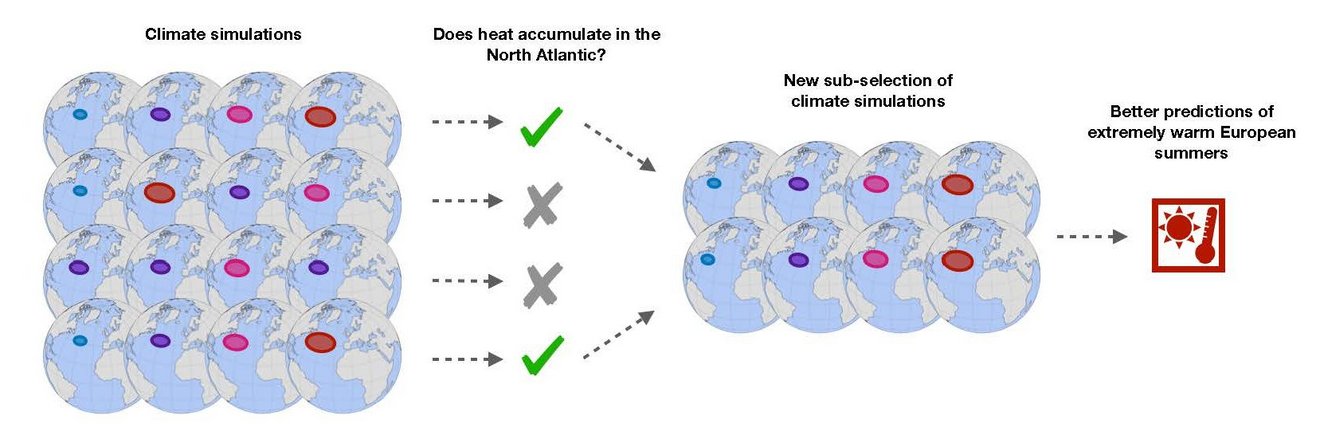Improving predictions of hot summers in Europe
In Europe, people are increasingly exposed to extreme heat events – with serious consequences for human health, ecosystems, and agriculture. Researchers at the Max Planck Institute for Meteorology (MPI-M) have developed and tested a method that can be used to improve the prediction of European hot summers up to several years in advance.
A crucial clue to impending heat waves can be found in the ocean: In an earlier study, MPI-M researcher Lara Wallberg and colleagues showed that anomalously warm European summers are often preceded by a build-up of heat in the North Atlantic. This heat build-up occurs up to three years before an extremely warm summer. In their new study, Lara Wallberg, Laura Suarez-Gutierrez (ETH Zurich & LSCE Paris), and MPI-M researchers Daniela Matei, Daniel Krieger, and Wolfgang Müller have shown that a corresponding physical indicator can be used to improve predictions of extremely warm European summers.
A selection method for prediction ensembles
Using the climate model MPI-ESM-LR, which was developed at MPI-M, scientists from the University of Hamburg calculated several simulations with slightly different initial conditions – a so-called ensemble. From such an ensemble, Wallberg and her colleagues filtered out those model runs that adequately represented the relevant North Atlantic mechanism, as indicated by anomalies of the North Atlantic current.
To test the quality of the resulting prediction, they used a so-called hindcast experiment: a prediction for a period that already lies in the past. This allowed them to compare the results with reanalysis data in the period 1964-2021, during which time 18 above-average warm summers occurred in Europe. The result: After applying the method, ten of these summers, the total number of hot summer days within these summers, as well as the amplitude and variability of the extremes are predicted more reliably.
Wallberg is now investigating whether the approach could have been used to predict the regional characteristics of the extremely warm summers of 2003, 2018, and 2022 as early as three years in advance. In particular, she is also looking at growing degree days to see if the method can provide valuable information for agriculture, for example.
Original publication
Wallberg, L., Suarez-Gutierrez, L., Matei, D., Krieger, D., & Müller, W. A. (2025). Anomalously warm European summers predicted more accurately by considering sub-decadal North Atlantic ocean heat accumulation. Geophysical Research Letters, 52, e2024GL111895. https://doi.org/10.1029/2024GL111895
Contact
Dr. Lara Wallberg
Max Planck Institute for Meteorology
lara.wallberg@mpimet.mpg.de

